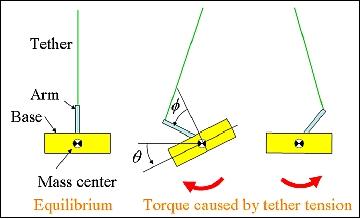Motion of a robotic arm mounted on a spacecraft presents an interesting challenge from a control perspective. A robot arm, such as Canadarm (space shuttle) and Canadarm2 (ISS), has significant mass compared to the spacecraft and thus its motion can perturb its attitude as well as its position. In a perfect world, one has plenty of propellant for attitude control thrusters to compensate for robotic arm motion. However, propellant is at a premium and even if plentiful, can impinge on either the robot arm itself or the payload that it is trying to manipulate.
This got me thinking... If a robot arm can cause rotation/translation of a spacecraft, it could theoretically be used as an attitude controller of sorts. This would lead to a much more complicated dynamical control problem because the final pose of the robot end effector is greatly influenced by the path taken. But nonetheless, in theory this could work if the robot arm mass is significant (e.g. w/ a payload caught). Also, if the robot arm is powered primarily by solar panels, it could theoretically be used over a longer span of time.
At least, this is all theory. In practice, are spacecraft robotic arms typically/ever used for attitude control, either as part of its payload-catching mission or as a non-standard method of attitude control? I'm not limiting myself to just the ISS or space shuttles, and am open to any robotic arm in space.

